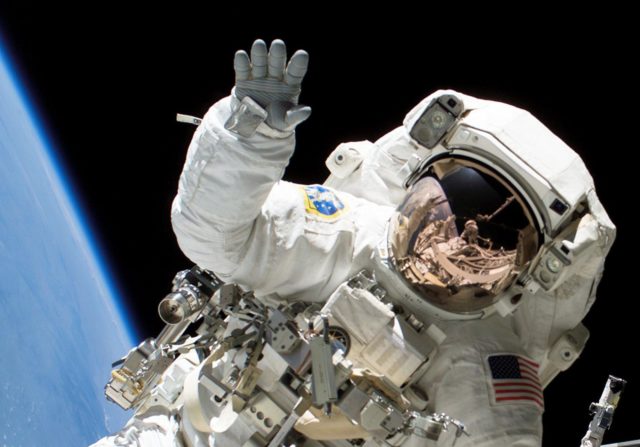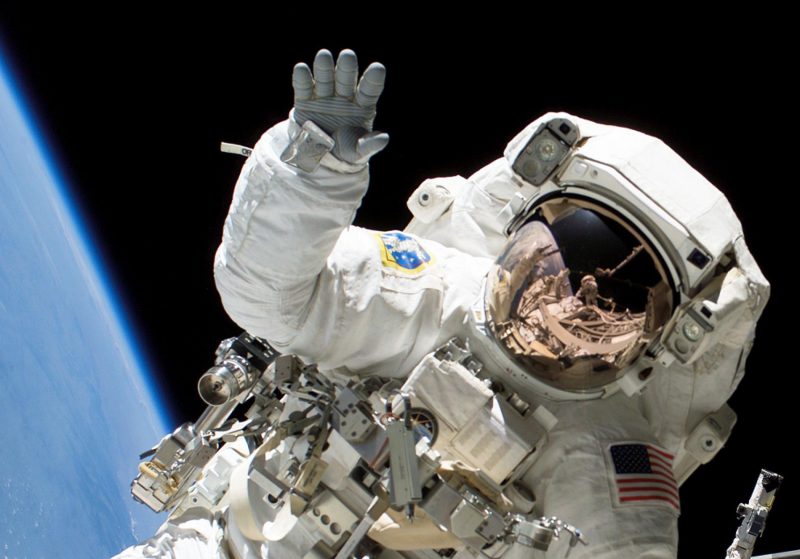Those who generally work with their hands will have most likely lost a fingernail at some point or another that way. But can you imagine losing your fingernails as an astronaut? Literally losing every single nail because you’re in space?
Of course, not all astronauts up in space are prone to losing their fingernails. It appears to be that the astronauts with the wider, larger hands are the only ones losing their nails, due to the fact that the spacesuit is a bit snug. The most interesting thing is that these astronauts don’t even have to be in space to risk their nails, they could still be in training and face this issue.
Dava Newman, a professor of aeronautics and astronautics at the Massachusetts Institute of Technology, said that the nail trauma and other hand issues are the biggest complaint from any astronaut. In fact, she said that it doesn’t matter what size a person’s hands are.

She added that the glove on the suit is one of the biggest challenges in making the space suits. Every part of the body must be covered, yet must also be functional for these astronauts to do their jobs efficiently and safely.
Newman went into detail and said that the trouble with the gloves, especially, is that the suit needs to simulate the pressure of Earth’s atmosphere in the cold, airless space environment. The gas-pressured gloves make the astronauts’ motor control a major challenge during the extravehicular activities such as spacewalks.
A recent study done on astronaut injuries during the spacewalks found that there were about 47% of those 352 people who reported the symptoms during the years of 2002 and 2004. Many of these injuries were only hand related. It is believed that the hands and nails had made contact with the hard lining inside the glove near the fingertips.
In fact, several of those cases had caused so much pain that the nails detached from the nailbeds, a condition called fingernail delamination.
Thankfully, this condition doesn’t prevent the astronauts from getting their work done. However, it becomes a painful nuisance when the nail gets snagged in the glove. The moisture in the glove could also lead to a bacterial or yeast infection in the exposed areas. The only solution the astronauts have is to keep the nails short and covered with protective dressings. Newman stated that she had heard some of the astronauts removing their fingernails before they went to space.
Currently, the gloves the astronauts wear has a pressurized inner layer which is protected by a thick outer layer. This offers protection from the cold as well as from passing micrometeorites.
Peter Homer, a founder of the space suit design, said that the gloves become a flexible surface, almost like putting air into a bike tire. However, the hard points in the hand press against the nails, causing possible blisters or cuts. The material is also a rubber-like substance, making it airtight but causing a lot of friction on the skin.
While in space, astronauts have to work in those gloves for six to eight hours at a time.
Homer and his colleagues are starting to test whether the space suit only affects those with longer fingers. He and his team first collected data from the 232 members who had completed the injury records. They then took their body measurements. About 22 of those people had suffered from the nail delamination.
Homer’s study showed that there wasn’t any connection between the length of the astronauts’ fingers and the size of the body suits. However, the study did show that the issue was with some of the people who had wider hands.
Homer explained that if a person has a glove on and tries to make a fist, it is extremely difficult to do because of the pressure. Homer and his team will be sure to keep working on a more comfortable glove. However, it may be difficult because they need to consider the pressure of space and the needed protection from the colder air.
